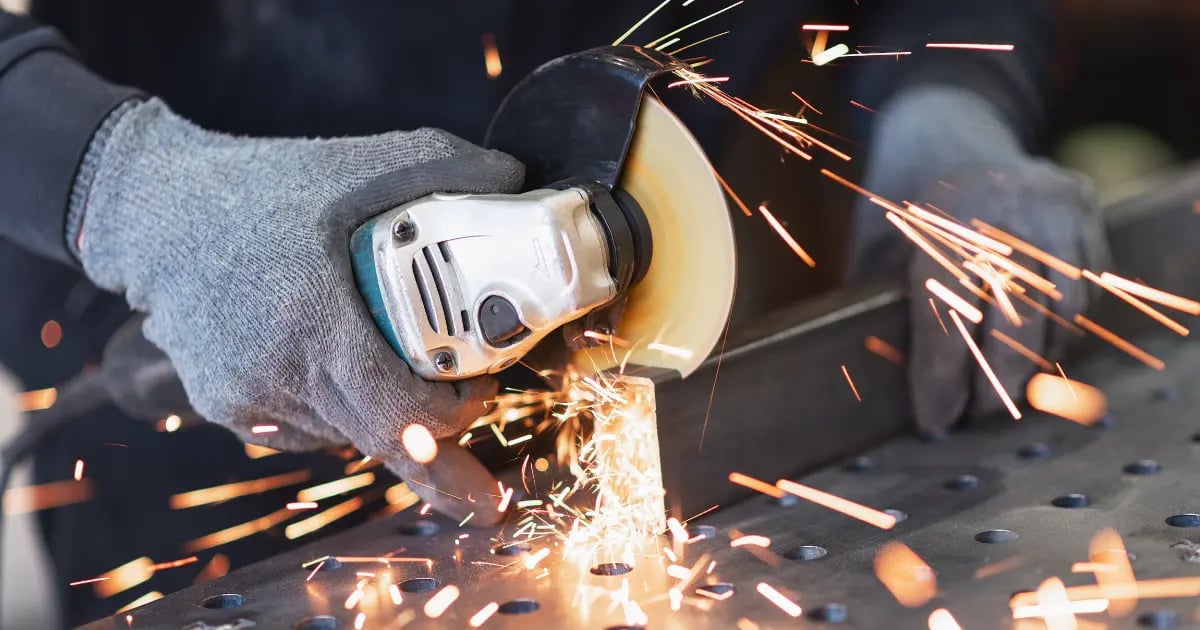
Grinding and abrasives have long been necessary but costly in welding to achieve precision and quality finishes. Manufacturers are now finding considerable savings in time and costs with OTC DAIHEN’s innovative welding technology that cuts down the need for grinding and abrasives.
The Challenge with Welding Abrasives
For many, abrasives are utilized at various stages of the welding process, from initial metal preparation to the final touches. They may be used to:
- Prepare Weld Joints. Abrasive cleaning methods, such as wire brushing, grinding and abrasive blasting, are often used to clean and bevel the weld joint. A clean surface is essential for a strong bond, whether the components are joined by welding, brazing or soldering.
- Create a Precise Fit. Abrasive cut-off wheels and metal saw blades are often used to minimize gaps and misalignment at the joints. A precise fit is crucial for the strength and appearance of the final weld.
- Correct Errors. Grinding or cutting and rewelding are often used to correct welding flaws like lack of fusion, undercut, porosity and cracks.
While these practices are common, they all come at a cost. Manufacturers pay not only for the abrasives used but also for the labor-intensive processes. This dual expenditure on application and removal significantly impacts both time and cost efficiency.
A Game-Changing Approach To Cut Abrasives & Grinding a Weld
Recognizing the need for a more streamlined and cost-effective approach, OTC DAIHEN has developed a welding technology that reduces the reliance on abrasives and labor-intensive grinding processes.
At the heart of this technology is the LSI-ASIC computer chip from the DAIHEN Electronics Division. This chip's high processing speed of an amazing 20 nanoseconds enables precise arc monitoring in real time. Immediate adjustments to output amperage, voltage and wire feed speed help reduce spatter and minimize its size.
This reduction in spatter generation means less time and money spent on abrasives and post-grinding. For the spatter that is generated, the smaller the better. Smaller spatter cools faster and is less likely to stick to the assembly, further reducing the need for post-grinding work.
Steels and stainless steels benefit most from this technology, especially when using spray transfer modes, including pulse spray transfer, which results in less spatter.
including pulse spray transfer, which results in less spatter.
It is also important to note that even with this technology, if a welding system is not set up and adjusted properly, the resultant welding process can likely produce spatter. The OTC DAIHEN Welbee power source, with an advanced, user-friendly control panel, makes fine-tuning the system much easier than with many other welding systems.
Economic and Environmental Impact
The economic impact of OTC DAIHEN's technology extends beyond just cost savings and efficiency. By minimizing the need for abrasives, manufacturers also are contributing to environmental sustainability. Reduced abrasive usage means fewer materials consumed, resulting in a positive environmental footprint.
As more and more industries move toward more sustainable and resource-efficient practices, OTC DAIHEN stands as a pioneer in shaping the future of welding technology, redefining the standards for precision and quality in welding.
Questions? Have a welding challenge to overcome? Our team members are experts in welding, robotics and automation. Click the map to find your OTC DAIHEN Regional Sales Manager.




